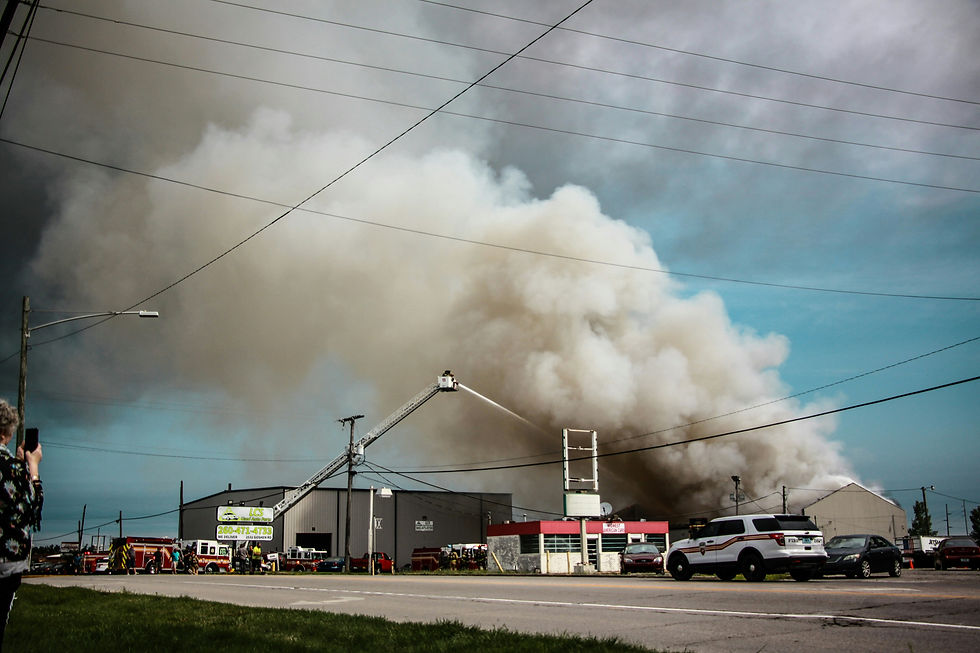Understanding the Annual Fire Safety Statement (AFSS)
- Azzo Project Services
- May 8
- 3 min read
Updated: Aug 8
What is an AFSS?
A certified passive fire protection professional must conduct an annual survey of the fire safety installations. This survey assesses whether any changes have affected the equipment's ability to meet its design requirements. The professional must then prepare a certificate stating that, after the survey, the equipment complies with its design specifications.
Maintenance of Prescribed Fire Safety Installations
Buildings must have their fire safety installations maintained as per MP 6.1, which includes:
Fire doors and shutters
Fire and smoke walls
Fire-rated ceilings
Service penetrations
Joint sealing
Floors
Sprays (vermiculite and fire rated paint)
These installations must be maintained to ensure they perform as intended during a fire emergency.


Who Needs to Submit an AFSS?
In Queensland, an Annual Fire Safety Statement must typically be submitted by the building owner or occupier of a commercial, industrial, or multi-residential building where essential fire safety measures, including passive fire protection systems, are installed.
Who Specifically Needs to Submit It?
The building owner (usually responsible by default).
A tenant or lessee (in cases where lease agreements transfer this responsibility).
Property or facilities managers, if delegated by the owner.
When Is It Required?
Annually, to the local council and Fire and Rescue authority, certifying that:
All essential fire safety measures (like fire doors, fire-rated walls, and penetrations) have been inspected.
They are maintained and functioning to the required standard.
Types of Buildings That Typically Require It:
Apartment buildings (Class 2 under the National Construction Code)
Offices, factories, warehouses, retail buildings (Class 5 to 9)
Mixed-use developments
Exceptions:
Some small or domestic residential buildings (like standalone houses) are exempt unless specific systems are installed.
Why Do I Need an AFSS?
Under the Building Fire Safety Regulation 2008, building occupiers must submit a yearly Annual Fire Safety Statement to the Queensland Fire and Emergency Services (QFES). This statement confirms that:
All prescribed fire safety installations are maintained in accordance with the Queensland Development Code MP 6.1.
The building complies with the relevant fire safety requirements.
Any critical defects identified have been rectified.
Failure to submit this statement can result in penalties.

Common Mistakes to Avoid with Your AFSS
ISSUE | MISTAKE | WHY IT MATTERS | TIPS |
Using Unaccredited Fire Safety Practitioners | Engaging someone who isn’t a registered or competent fire safety practitioner (CFSP). | Only accredited practitioners are authorised to assess essential fire safety measures. | Check accreditation via the Fire Protection Association Australia (FPA Australia) or relevant state database. |
Not Testing All Required Essential Fire Safety Measures (EFSMs) | Missing systems like fire dampers, fire doors, hydrants, or emergency lighting. | An incomplete AFSS is non-compliant. | Cross-check the original fire safety schedule issued with the building’s occupancy certificate. |
Submitting Late or Incomplete Statements | Submitting after the due date or with missing information. | Local councils can issue fines or non-compliance notices. | AFSS must be submitted annually, within 12 months of the previous statement. |
Failing to Maintain Fire Safety Systems Year-Round | Only checking systems just before AFSS is due. | Systems may not perform during a real emergency or pass inspection. | Follow AS 1851 for regular maintenance throughout the year. |
Incorrect or Outdated Fire Safety Schedule | Using a fire safety schedule that no longer matches the building’s systems. | You may certify incorrect or missing measures. | Confirm the current fire safety schedule with council before assessment. |
Improper Documentation and Recordkeeping | No maintenance logs, service records, or technician reports. | Lack of documentation can invalidate the AFSS or fail an audit. | Maintain a fire safety file with all inspection reports, maintenance logs, and certifications. |
Neglecting Passive Fire Systems | Overlooking passive systems like fire doors, fire dampers, penetration seals. | These are critical and often missed due to being “out of sight.” | Include all passive fire elements in your scheduled inspection. |
Poor Communication Between Owners and Contractors | Building owners and property managers not coordinating inspections or upgrades. | Missed items or incomplete statements can result. | Appoint a responsible person (e.g. facility manager) to coordinate everything. |
Untrained or Inadequate Assessors | Having the wrong trade or non-specialist assess a system (e.g. a plumber certifying smoke detectors). | Only competent practitioners with the right expertise should certify specific systems. | Use specialists for each system (sprinklers, alarms, doors, etc.). |
Ignoring Previous Non-Compliance Issues | Submitting a new AFSS without addressing last year’s defects. | Repeating non-compliance can escalate enforcement or lead to legal action. | Create a corrective action plan after each AFSS. |
STAY SAFE, STAY CERTIFIED!




Comments